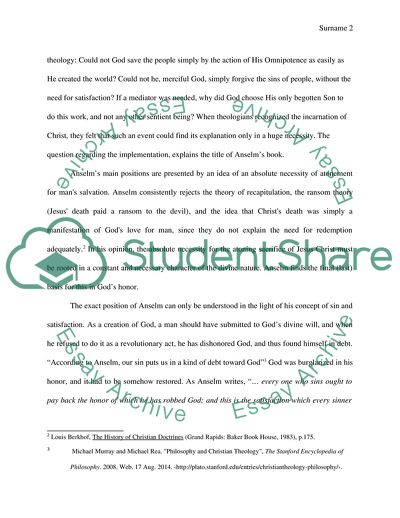Cite this document
(Anselms Theory of Atonement Report Example | Topics and Well Written Essays - 1250 words, n.d.)
Anselms Theory of Atonement Report Example | Topics and Well Written Essays - 1250 words. https://studentshare.org/religion-and-theology/1836713-incarnation-and-atonement
Anselms Theory of Atonement Report Example | Topics and Well Written Essays - 1250 words. https://studentshare.org/religion-and-theology/1836713-incarnation-and-atonement
(Anselms Theory of Atonement Report Example | Topics and Well Written Essays - 1250 Words)
Anselms Theory of Atonement Report Example | Topics and Well Written Essays - 1250 Words. https://studentshare.org/religion-and-theology/1836713-incarnation-and-atonement.
Anselms Theory of Atonement Report Example | Topics and Well Written Essays - 1250 Words. https://studentshare.org/religion-and-theology/1836713-incarnation-and-atonement.
“Anselms Theory of Atonement Report Example | Topics and Well Written Essays - 1250 Words”. https://studentshare.org/religion-and-theology/1836713-incarnation-and-atonement.


